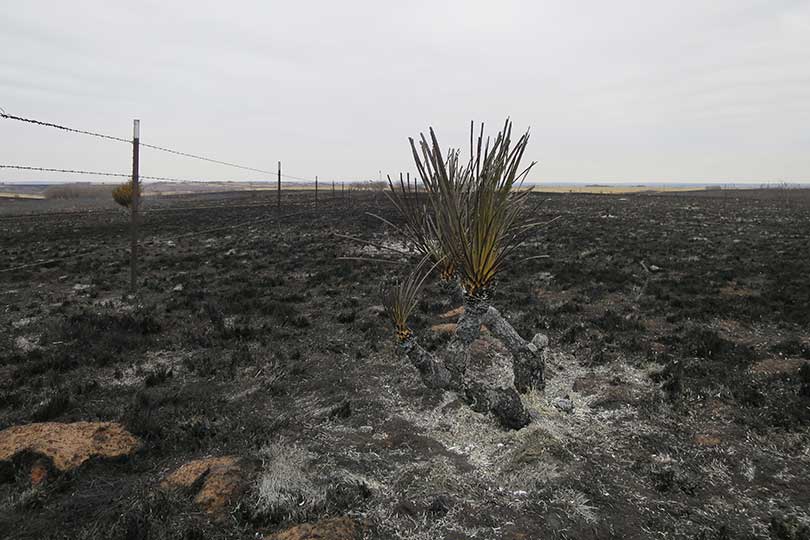By Shala Watson
Multimedia Writer
Officials and landowners are surveying the losses after fast-moving wildfires burned through the Texas Panhandle last week. Recovery efforts continue to help locate missing livestock, repair fences and supply displaced livestock with hay and forage.
The Perryton fire burned more than 318,000 acres and is the third largest recorded in Texas, according to the Texas A&M Forest Service.
Over the years, various Texas communities have lost homes, commercial crops, livestock and human lives due to wildfires.
For this reason, a proactive approach to community-wide wildfire protection planning is necessary to reduce future loss.
The expanding threat of wildfires to Texas communities is a result of the state’s ever changing land use, climate and population. Many Texas communities are within or are growing into the Wildland Urban Interface (WUI). The WUI is an area where flammable homes are mixed with flammable vegetation.
The Texas A&M Forest Service can work with community leaders such as city managers/planners, fire chiefs, emergency management coordinators and homeowner associations to establish a suitable Community Wildfire Protection Plan program like “Ready, Set, Go!” (RSG).
“It’s about being ready around your home, reducing fuel hazards around your house and using defensible space,” Texas A&M Forest Service Fire Wise Coordinator Nick Harrison said. “It’s just to prepare people in the event that wildfires could impact them.”
RSG helps prepare fire departments to teach individuals who live in high risk wildfire areas and WUIs on how to best prepare themselves and their properties against wildfire threats.
The program also seeks to develop and improve the dialogue between fire departments and the residents they serve.
RSG is managed by the International Association of Fire Chiefs (IAFC) and was launched in March 2011. Texas is very active with nearly 400 members.
The program helps communities learn how to protect homes ahead of time, stay abreast of current fire dangers and evacuate safely if a wildfire is bearing down on the community.
Ready: Your home and family should be ready long before a wildfire ignites. Creating defensible space through proper landscaping techniques and using fire resistant building materials designed to withstand a wildfire are a part of this step.
Set: When a wildfire is headed your way, it’s time to start preparing to leave. Alert your family and friends. Stay tuned to news reports. Grab your emergency kit, and be ready to head out at a moment’s notice. Make sure you know where you’re going and what you’re taking with you.
Go!: Once the fire is moving in, there is often nothing you can do but get out of its way. At this point, it’s time to go!
“We hate to lose any property and we don’t want any loss of life, so we want to get people out as soon as they can whenever possible,” Harrison said.
To find out more about the program, click here.

